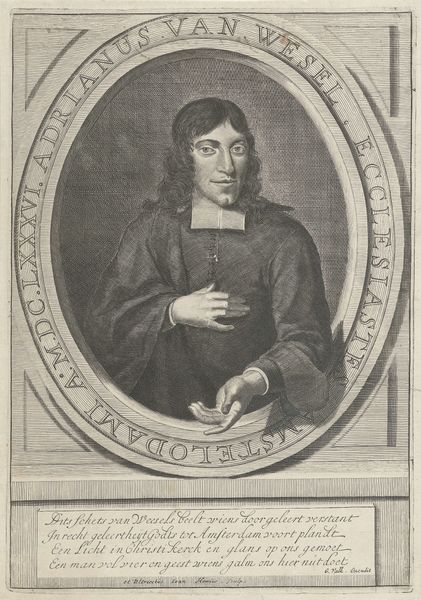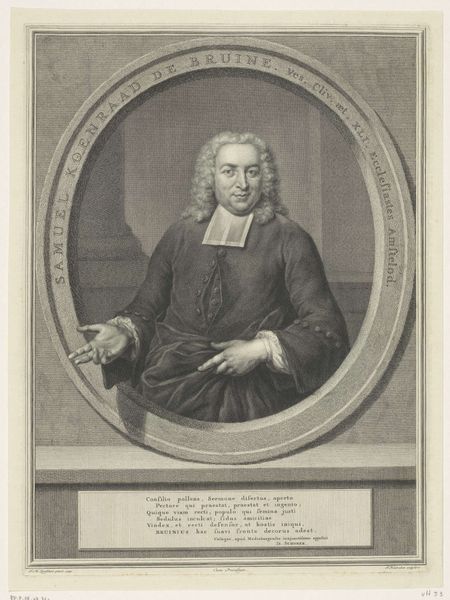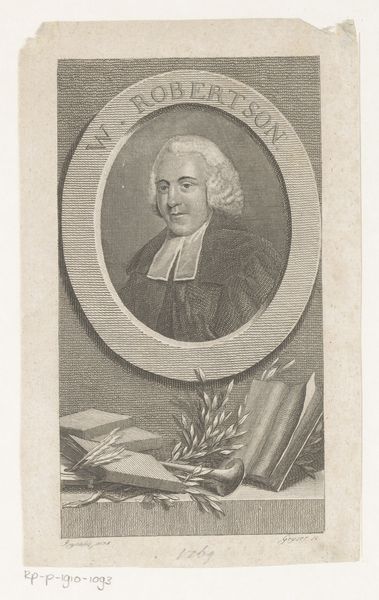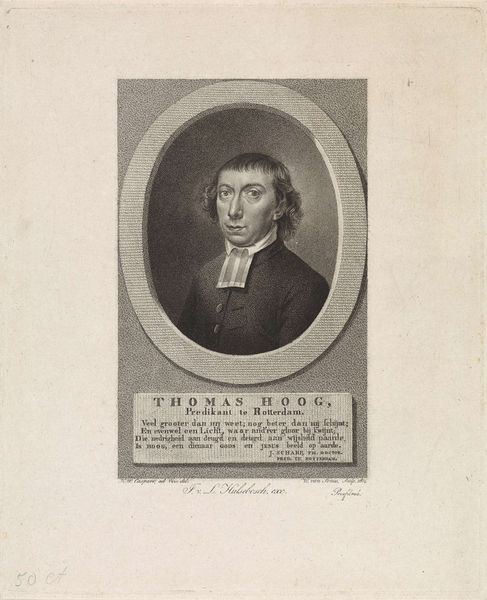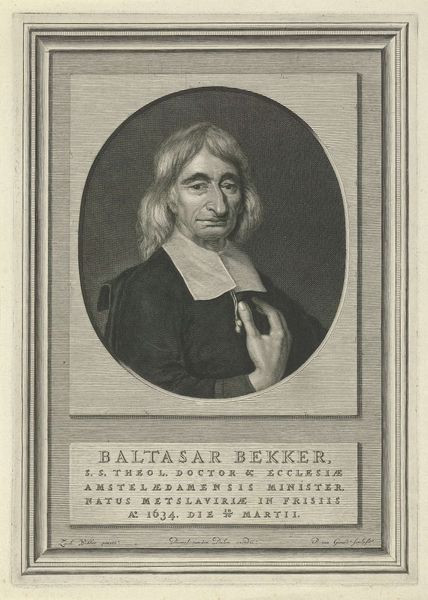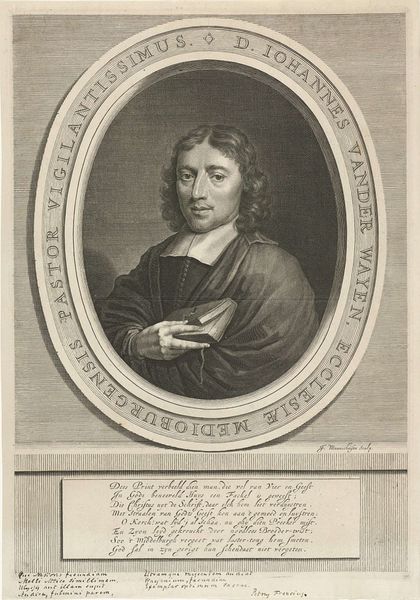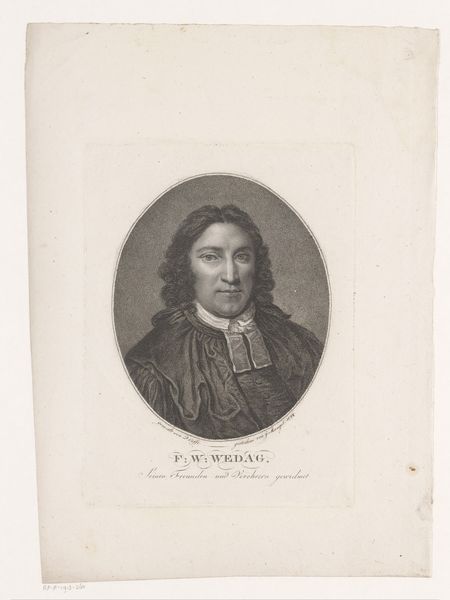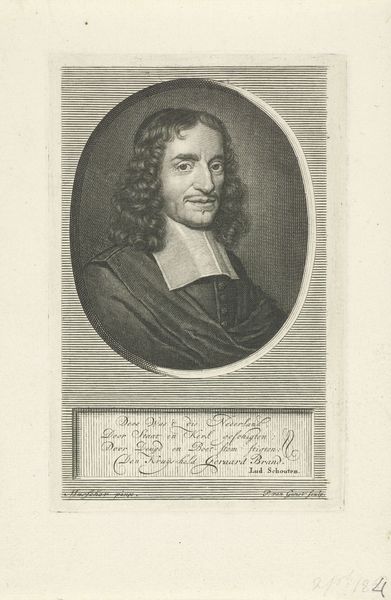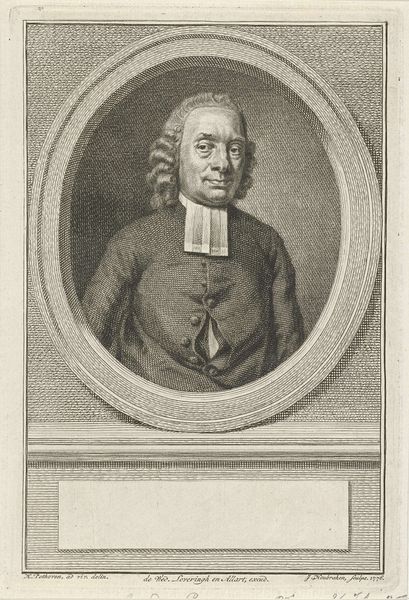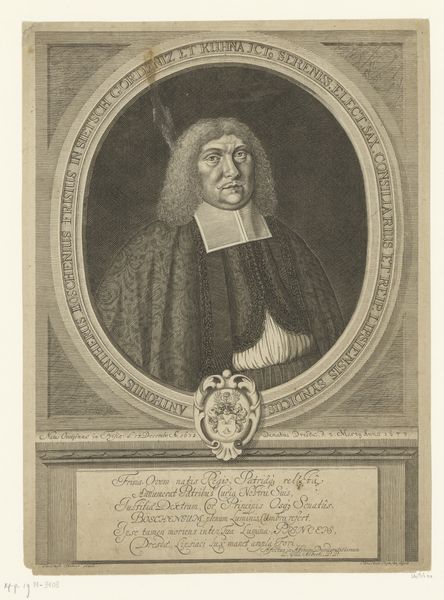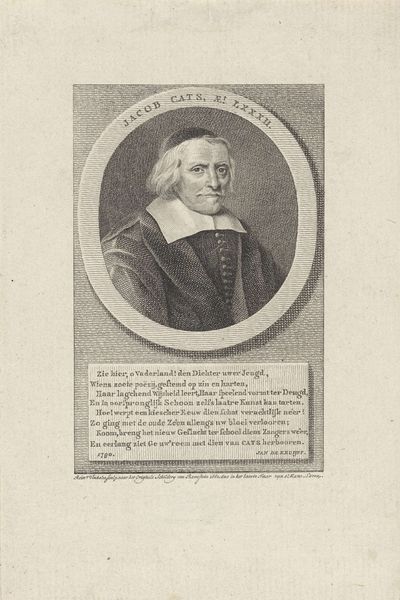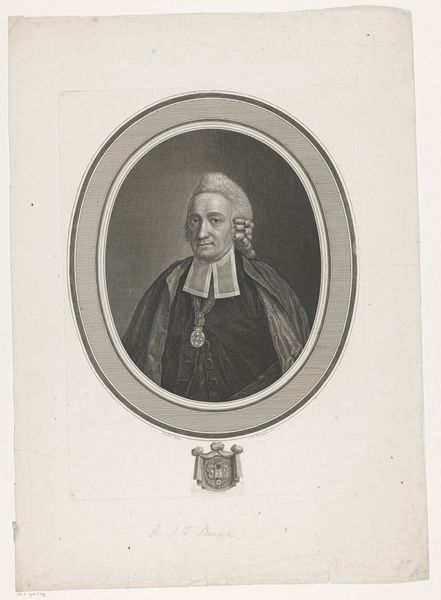
engraving
#
baroque
#
dutch-golden-age
#
old engraving style
#
historical photography
#
portrait reference
#
history-painting
#
engraving
Dimensions: height 295 mm, width 210 mm
Copyright: Rijks Museum: Open Domain
Curator: Here we have "Portret van Henricus van Rijp," an engraving by Anthony van Zijlvelt from 1682. My immediate reaction is to the intricacy of the lines. It’s remarkable how much detail he achieves with just etching. Editor: I agree, the line work is beautiful. There is a certain somber quality that pervades this work. What can you tell me about Henricus van Rijp? What position did he hold? Curator: He was a pastor. You can see that inscribed on the oval frame surrounding the portrait: "Pastor Ultrajectinae Ecclesia." So, a pastor of the Utrecht church. The inscription below provides insight into his role—someone who cultivated faith and whose words were powerful. Editor: "Whose tongue wounds the soul"—I notice how that tension, between healing and wounding, encapsulates the complex role of religious leaders, especially during times of social upheaval. It makes me consider what types of conversations he may have facilitated in the church. Curator: That's interesting to consider. What kind of sociopolitical struggles the people may have endured? It is worth thinking about that in the context of the Dutch Golden Age, and the ongoing negotiations of faith and power at the time. These types of commissions reinforced their power within their communities. Editor: It's a fascinating push and pull, especially visually. The man is depicted with an air of authority and yet almost humility, hands clasped in front, with simple attire. His gaze seems rather direct and his face almost aged, even though the inscription specifies he was 54 at the time it was engraved. Curator: Right. Engravings like this circulated widely. Consider it a form of public relations—literally shaping the image of powerful figures for their contemporary audience. It shows a portrait of influence. Editor: A powerful visual and textual reminder of the reach of individuals like Van Rijp and the institution he represents. It reminds us to always question how images play into wider socio-political narratives. Curator: Indeed, art serves both to reflect and to shape perceptions. That duality keeps me coming back. Editor: Absolutely, leaving us much to consider within a relatively simple engraving.
Comments
No comments
Be the first to comment and join the conversation on the ultimate creative platform.
